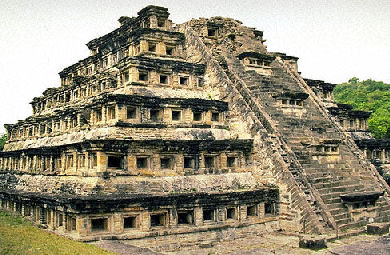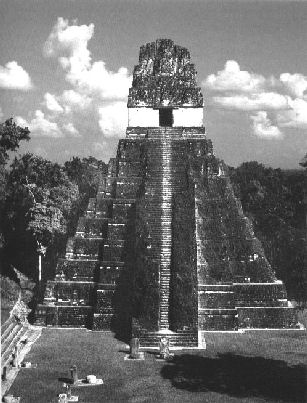Construction Methods
These are some of the famous pre-Columbian pyramids. Many of the design elements used in Mesoamerican art and architecture mimic the stepped forms of the buildings themselves. Once you have picked out your favorite, you can try to create it yourself with the 3D-Builder software. You might want to print out the image so you can look at it while you are trying to build it. Before starting, it will help if you think about the following:
The base shape (first layer of the pyramid)-- Is it square? Rectangular? What is the ratio of the sides?
How times does the base shape repeat (that is, how many "iterations" of the base shape are there)?
How much does the base shape "shrink" in each iteration? Is it the same change on each side?

The Temple of the Inscription is in Palenque, an important Mayan city located in the highland rainforests of Chiapas. It was built as a tomb for Pacal-Kin, a great Mayan king, in 692 AD. His tomb was discovered full of priceless treasures in 1952, almost 1300 years later. In 1985, the famous Mask of Pacal was stolen along with many other treasures from the Instituto Nacional de Antropologia in Mexico City. It was recovered three years later.

This unique and intricate little pyramid is located in El Tajin, on the central Gulf coast in Veracruz. Its builders are mysterious and may have been either Totonac or Huasteca. El Tajin flourished at the same time as the Maya, and there is evidence that the builders of El Tajin and the Maya had a trade relationship. The pyramid has 365 niches, representing the solar year, and is almost perfectly symmetrical.

Tikal is one of the largest Mayan cities yet found. It is in Guatemala, surrounded by rainforest. Temple I was probably built between 731 and 734 AD and is on top of the tomb of one of the rulers of Tikal. Like many Mesoamerican buildings, it reflect elements of Mayan spirituality, specifically its nine levels, which represent the nine gods of the underworld.